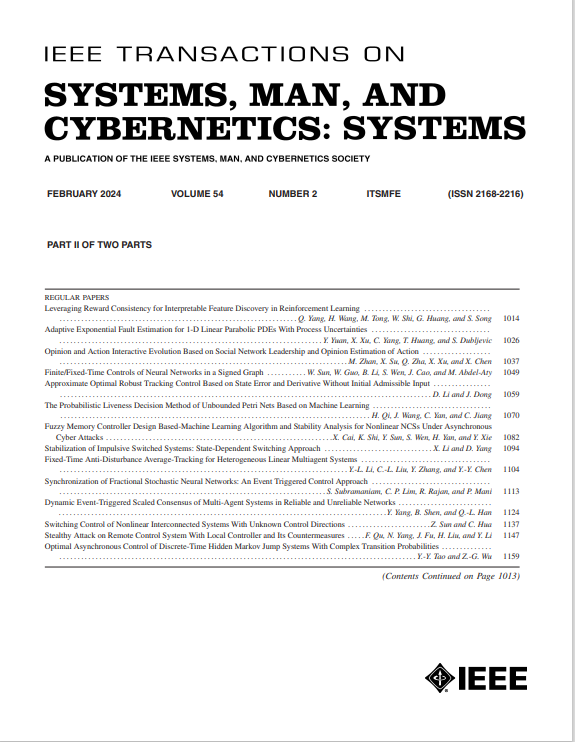Manifesting Nominal Assistance in Hemiplegia Gait Training Through an Assistive Normality Framework
IF 8.7
1区 计算机科学
Q1 AUTOMATION & CONTROL SYSTEMS
IEEE Transactions on Systems Man Cybernetics-Systems
Pub Date : 2025-08-20
DOI:10.1109/TSMC.2025.3595211
引用次数: 0
Abstract
Rehabilitation exoskeletons have been demonstrated to benefit mobility-limited patients; however, accessibility is hindered by several challenges, and interaction evaluation of coupled human–exoskeleton systems remains critically understudied. In this pioneering study, “assistive normality (AN)” is introduced to characterize the cross-stage spatiotemporal features of exoskeleton-assisted gait in hemiplegic patients, and a multidimensional, low-data-cost metric framework is developed to quantify AN. Three subdivided metrics, including gait restoration (GR), phase-deviation weighting (PDW) and multijoint coordination (MJC), are proposed to assess coupled system interaction behavior across different intervention stages during rehabilitation. A homologous difference evaluation paradigm (HDEP) is introduced to capture pathological differences between healthy and hemiplegic subjects on the basis of the reusability of experimental data, providing an approach for the nominal assistance calibration and assessment of specific exoskeleton devices. In a pilot study with eight healthy individuals and nine hemiplegic patients, between-group metric differences were analyzed to determine the calibrated AN of an exoskeleton. The results provide calibration references for quantitative metrics and demonstrate the ability of framework to characterize the temporal dynamics of human–exoskeleton interactions. The proposed AN framework offers a generalizable approach to assistive robotics, potentially enhancing evaluation of human-robot interaction and advancing clinical rehabilitation applications.通过辅助正常框架在偏瘫步态训练中体现名义援助
康复外骨骼已被证明对行动不便的患者有益;然而,可及性受到一些挑战的阻碍,并且耦合人外骨骼系统的相互作用评估仍然缺乏研究。在这项开创性的研究中,引入了“辅助正常状态(AN)”来表征偏瘫患者外骨骼辅助步态的跨阶段时空特征,并开发了一个多维,低数据成本的度量框架来量化AN。提出了步态恢复(GR)、相位偏差加权(PDW)和多关节协调(MJC)三个细分指标来评估康复过程中不同干预阶段耦合系统的交互行为。在实验数据可重复使用的基础上,引入了一种同源差异评估范式(HDEP)来捕捉健康和偏瘫受试者之间的病理差异,为特定外骨骼设备的名义辅助校准和评估提供了一种方法。在8名健康个体和9名偏瘫患者的初步研究中,分析了组间度量差异,以确定外骨骼的校准AN。结果为定量指标提供了校准参考,并证明了框架表征人类外骨骼相互作用时间动态的能力。提出的AN框架为辅助机器人提供了一种可推广的方法,潜在地增强了对人机交互的评估,并推进了临床康复应用。
本文章由计算机程序翻译,如有差异,请以英文原文为准。
求助全文
约1分钟内获得全文
求助全文
来源期刊

IEEE Transactions on Systems Man Cybernetics-Systems
AUTOMATION & CONTROL SYSTEMS-COMPUTER SCIENCE, CYBERNETICS
CiteScore
18.50
自引率
11.50%
发文量
812
审稿时长
6 months
期刊介绍:
The IEEE Transactions on Systems, Man, and Cybernetics: Systems encompasses the fields of systems engineering, covering issue formulation, analysis, and modeling throughout the systems engineering lifecycle phases. It addresses decision-making, issue interpretation, systems management, processes, and various methods such as optimization, modeling, and simulation in the development and deployment of large systems.
 求助内容:
求助内容: 应助结果提醒方式:
应助结果提醒方式:


